No, kleckern is not their thing and MSI likes to put one more on it when the specifications of the standard or Reference models ("Nvidia GeForce GTX 1080 Ti 11GB in Test") do not appear pompous enough. Why not, as long as we still have a good grip on the consequences of overeating? With a power target of over 330 watts and a massive cooler, you look pretty optimistic. And that's where we want to start in the test.
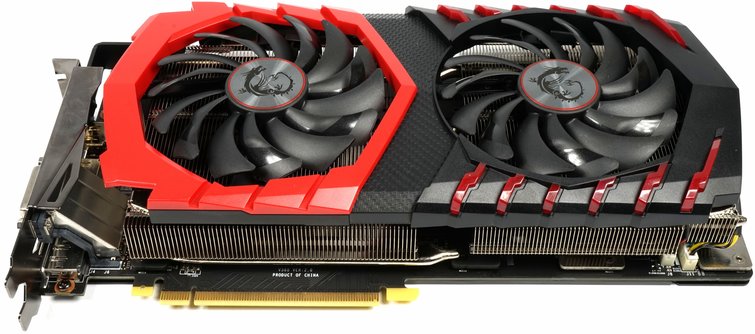
Since the actual performance of all board partner cards depends more on the actual boost clock achieved, and thus causally depends on the cooling, the power target and above all the quality of the respective chip, any test based only on benchmark bars is more of a Random snapshot of a single specimen. This is precisely why we have focused on the actual technical implementation of each model and have been able to document this very well with our equipment.
Unboxing, dimensions and connections
But back to the MSI GTX 1080 Ti Gaming X 11G. MSI was very early on with its own model and, as so often in recent times, does not rely on the highest possible clock rate ex works, although the maximum selectable power target of up to 330 watts (via software) is already a lot of wood. So it will be interesting to see how well the huge cooler might be. (or not). Conservative settings ex works and enough manual OC leeway for the (un)adult play children have never been an unwise decision.
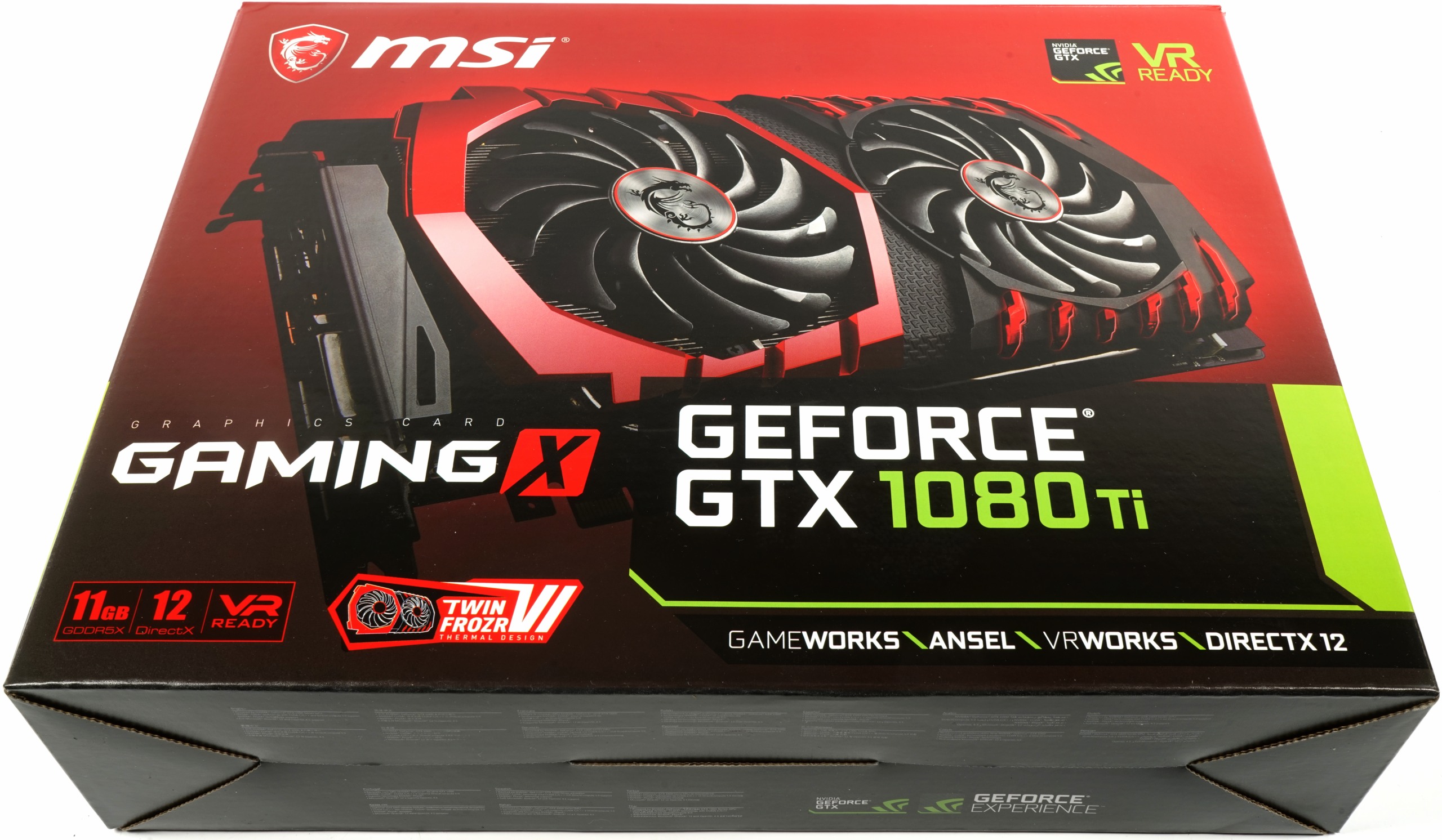
Compared to the MSI GTX 1080 Gaming X (non-Ti), the card has become one thing in particular: heavier. Since we also had to notice cooling problems in the area of voltage converters and memory modules with the smaller card at the time, the conversion and further development of the cooler are now only logical.
With a combat weight of 1,253 kilos, moderate 27.9 mm real installation length (outer edge slot aperture to the end of the cover), a height of 13.5 cm (upper edge motherboard slot to top edge cover) and a mounting depth of 4.57 cm, the 2.5 slot card is a real thick ship, on the back, approx. 0.5 cm of space is required, which should be taken into account for large tower coolers.
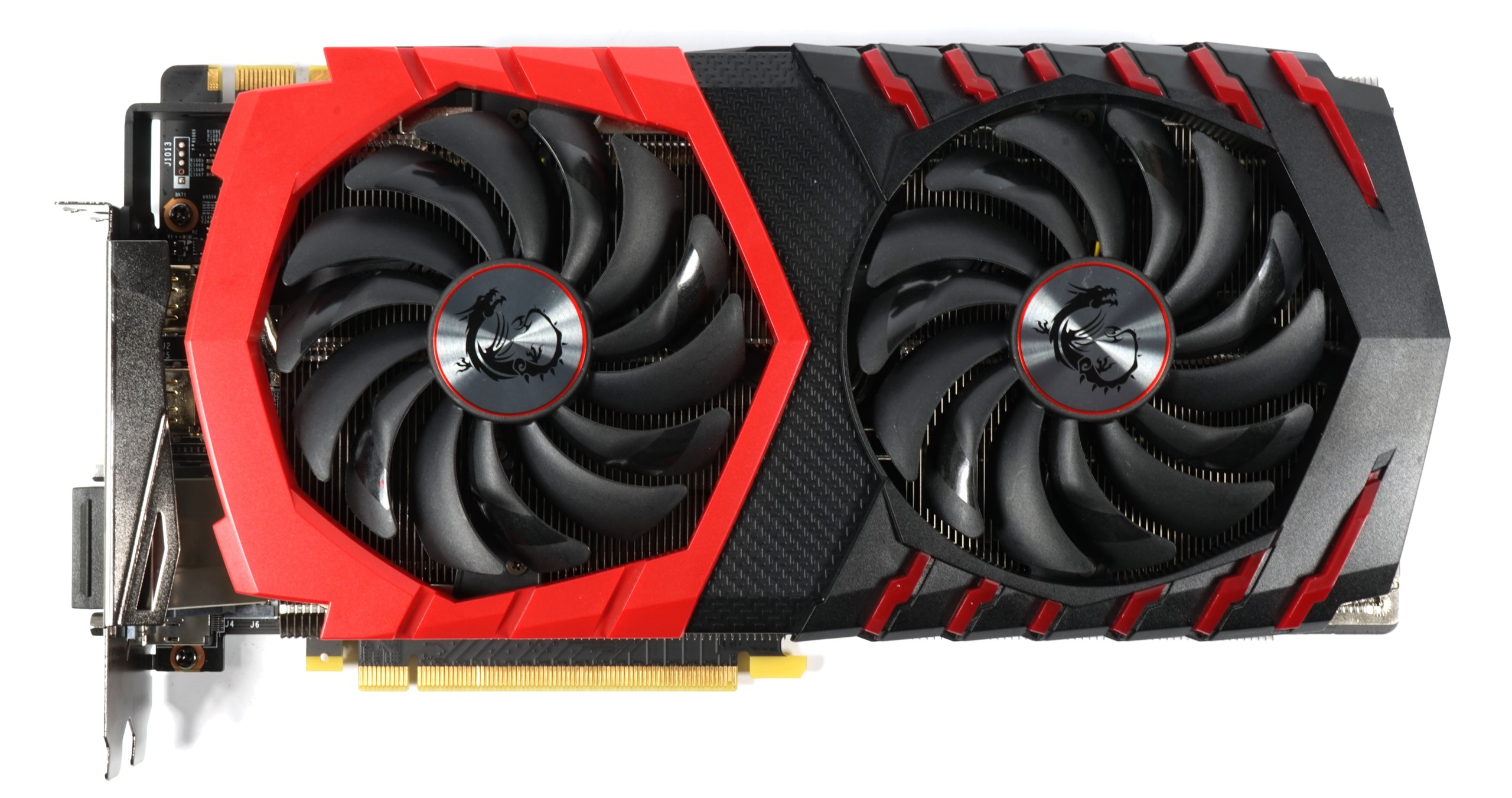 |
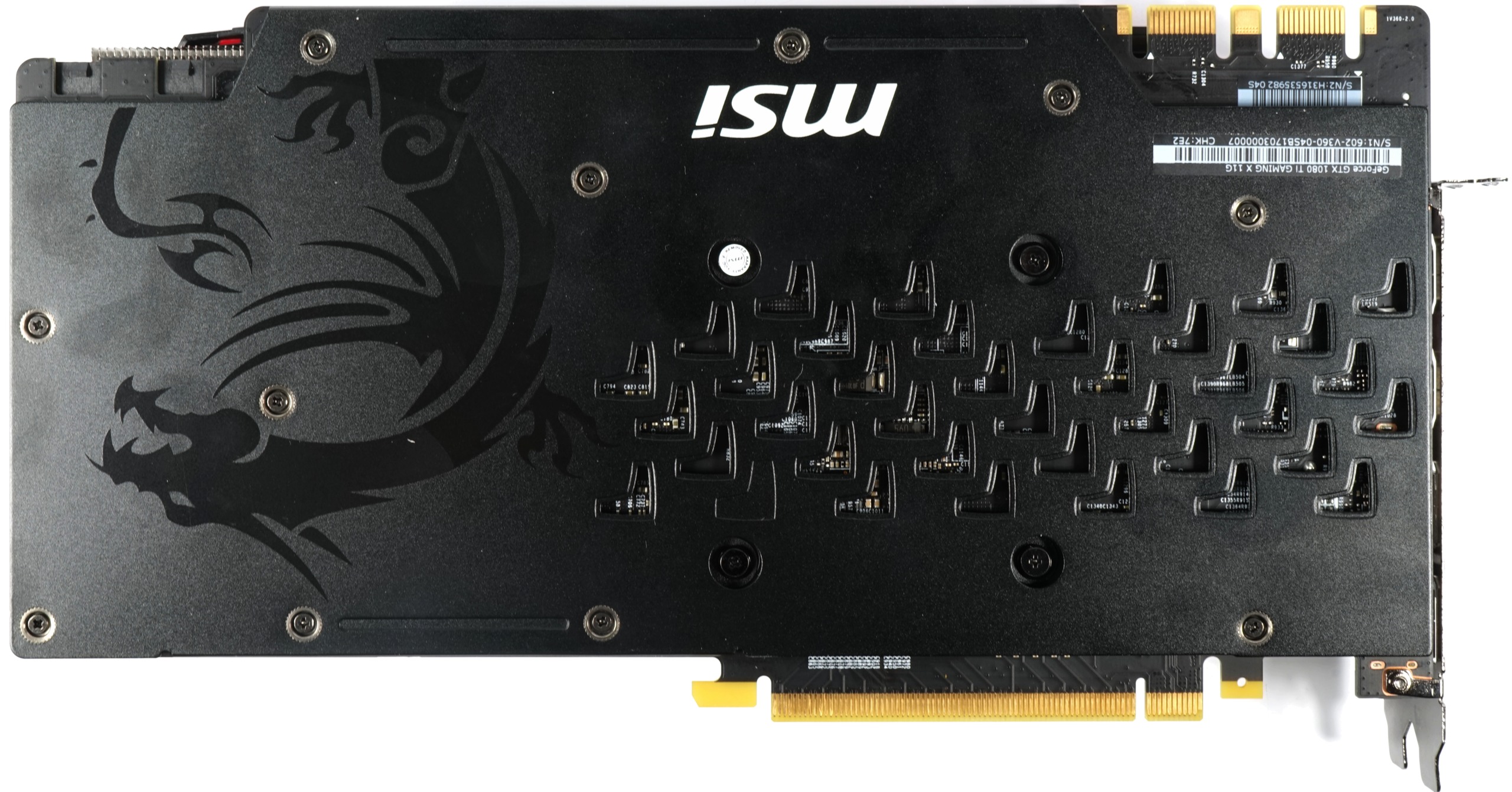 |
The material mix of red-black plastic for the cover is a matter of view, but follows the design line of other and older cards very consistently. The top is characterized by the backlit MSI logo and a printed GeForce lettering, the two 8-pin power supply connectors sit 180° rotated at the top of the board.

The lower and top sides show the vertical slat orientation of the cooler and a particularly pleasing detail, because MSI has taken up the feedback and finally integrated a real VRM heat sink into the large radiator structure.

The end of the map shows and the three 6mm and an 8mm heatpipe for the right part of the radiator structure, but more on that later. With regard to the connection variety of the slot panel, MSI relies on two HDMI 2.0 ports, as well as two DisplayPort 1.4 jacks and a dual-link DVI-D connector in terms of VR glasses. However, only a maximum of four outputs can be used at a time.
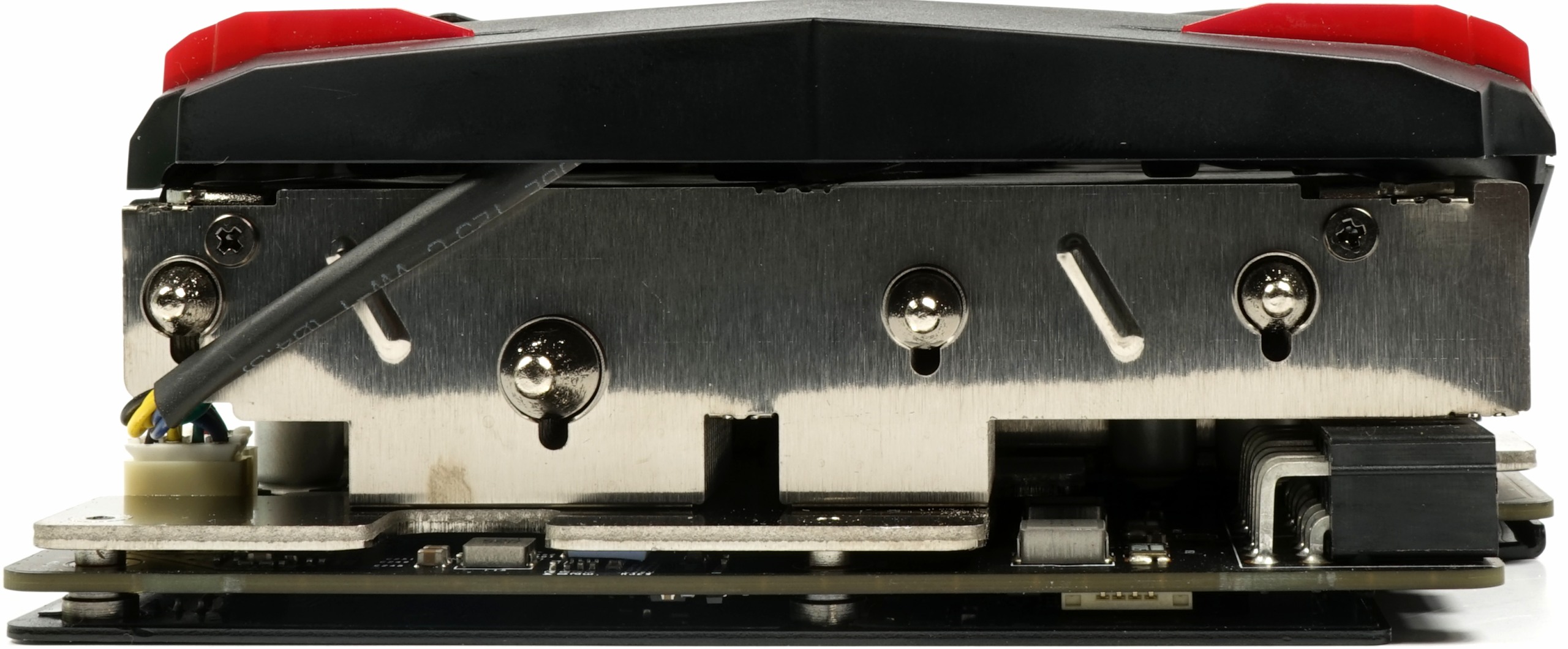 |
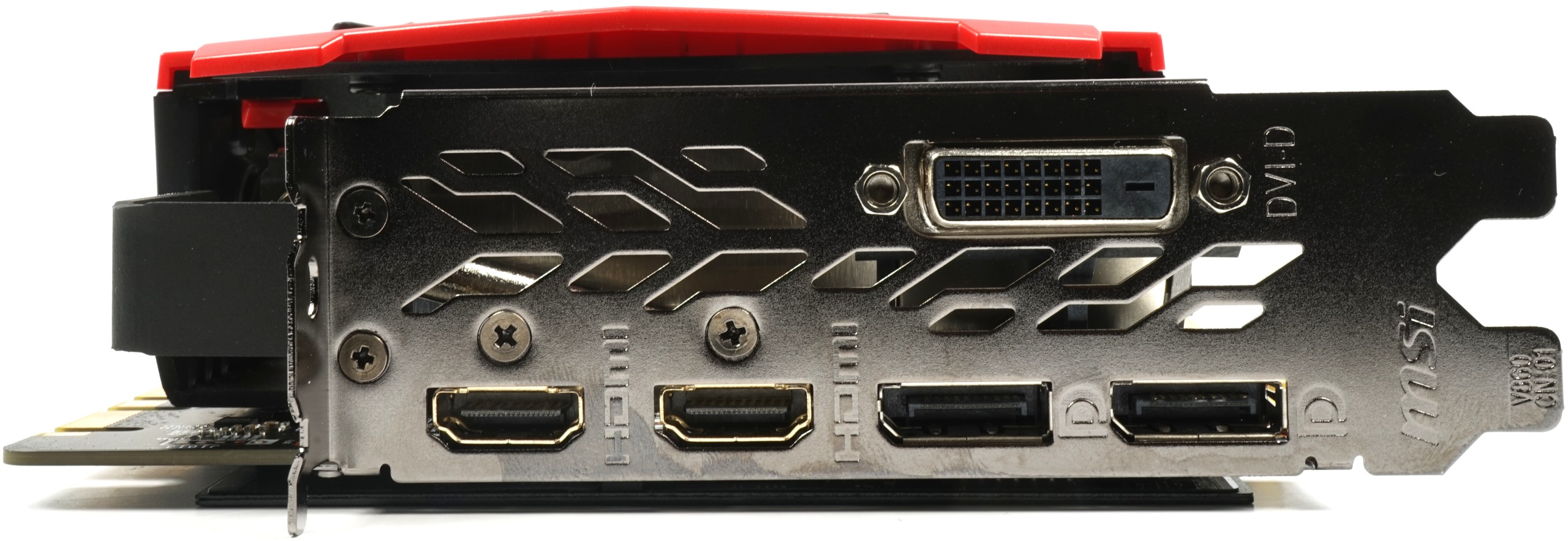 |
Specifications
The GPU-Z screenshot shows us the most important key data in advance, whereby the actual boost achieved with our model was significantly higher:
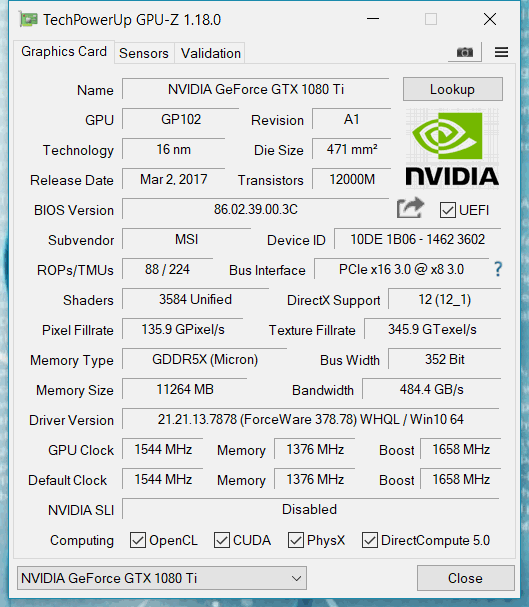
Finally, the whole thing again as a tabular comparison to the other relevant graphics card models:
| Nvidia Titan X – (Pascal) Mr President, I would like to |
Nvidia Geforce GTX 1080 Ti FE |
Msi GTX 1080 Ti Gaming X 11G |
Nvidia Geforce GTX 1080 FE |
Nvidia Geforce GTX 980 Ti |
|
|---|---|---|---|---|---|
| Gpu |
GP102 | GP102 | GP102 | GP104 | GM200 |
| CUDA cores |
3584 | 3584 | 3584 | 2560 | 2816 |
| Base clock | 1417 MHz | 1480 MHz | 1544 MHz | 1607 MHz | 1000 MHz |
| Boost clock |
1531 MHz+ | 1582 MHz+ | 1658 MHz | 1733 MHz+ | 1076 MHz+ |
| Memory Size & Type |
12 GByte GDDR5X |
11 GByte GDDR5X |
11 GByte GDDR5X |
8 GByte GDDR5X |
6 GByte GDDR5 |
| The size |
471 mm2 | 471 mm2 | 471 mm2 | 314 mm2 | 601 mm2 |
| Technology |
16 nm | 16 nm | 16 nm | 16 nm | 28 nm |
| Transistors |
12 billion | 12 billion | 12 billion | 7.2 billion | 8 billion |
| Streaming Multiprocessors (SM) |
28 | 28 | 28 | 20 | 22 |
| GFLOPS (basic clock) |
10.157 | 10.609 | 11.068 | 8.228 | 5.632 |
| Texture Units |
224 | 224 | 224 | 160 | 176 |
| Texture fill rate |
317.4 GT/s | 331.5 GT/s | 345.9 GT/s | 257.1 GT/s | 214 GT/s |
| Rops |
96 | 88 | 88 | 64 | 96 |
| Pixel fill rate |
136 GPix/s | 130.24 GPix/s | 135.9 GPix/s | 114.2 GPix/s | 116.7 GPix/s |
| Storage data rate |
10 Gbps | 11 Gbps | 11 Gbps | 10 Gbps | 7 Gbps |
| Storage bus |
384 bits | 352 bits | 352 bits | 256 bits | 384 bits |
| Memory bandwidth |
480 GByte/s | 484 GByte/s | 484 GByte/s | 320 GByte/s | 336 GByte/s |
| L2 cache |
3 MByte | 2816 KByte | 2816 KByte | 2 MByte | 3 MByte |
| Tdp |
250 watts | 250 watts | 330 watts | 180 watts | 250 watts |
Test system and measurement methods
The new test system and the methodology have already been described in great detail in the basic article "How We Test Graphics Cards" (English: "How We Test Graphics Cards") and therefore, for the sake of simplicity, we now only refer to this detailed Description. So if you want to read everything again, you are welcome to do so. However, we have improved CPU and cooling once again in order to largely exclude possible CPU bottle necks for this fast card.
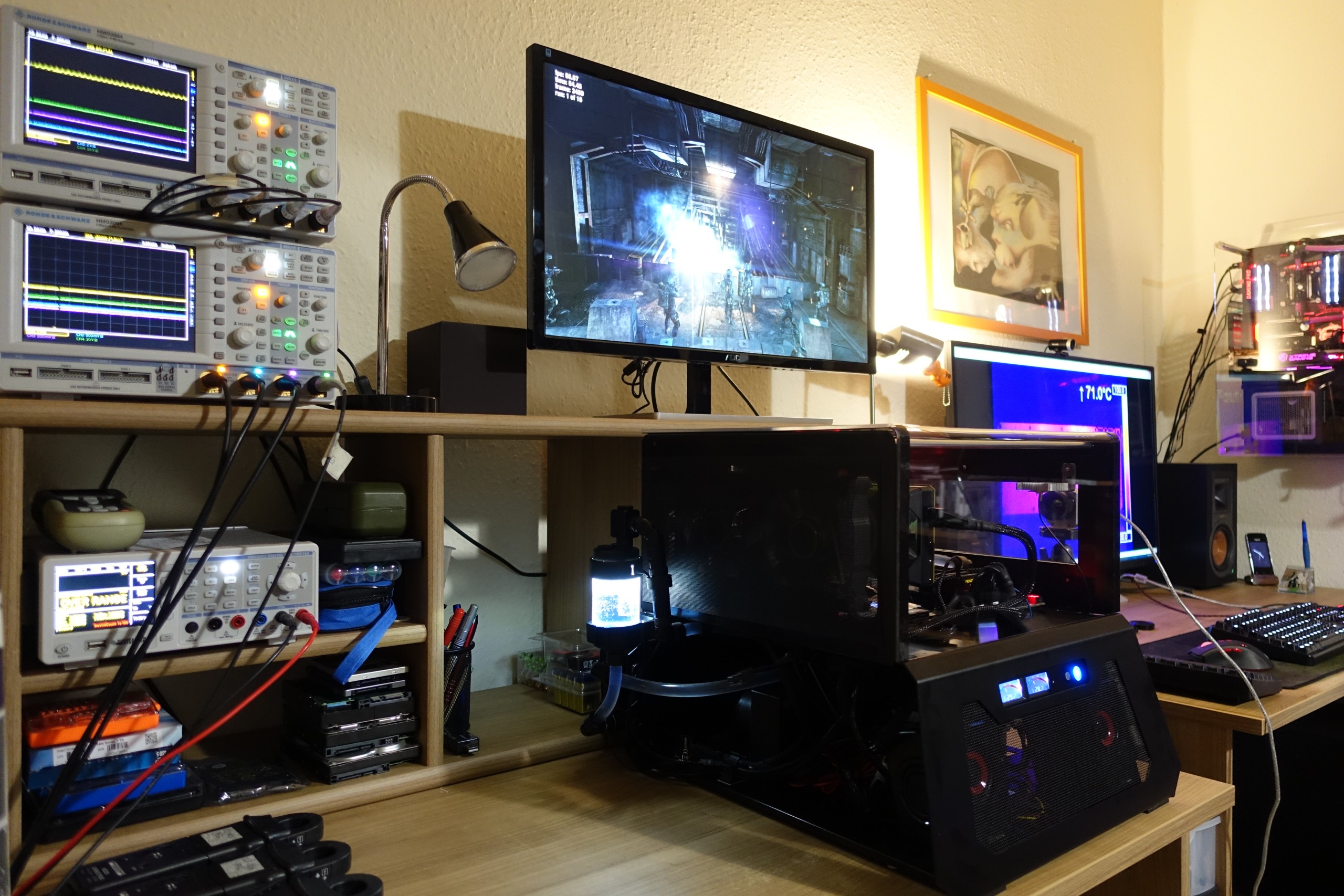
If you are interested, the summary in table form quickly provides a brief overview:
| Test systems and measuring rooms | |
|---|---|
| Hardware: |
Intel Core i7-6900K -4.3GHz MSI X99S XPower Gaming Titanium Corsair Vengeance DDR4-3200 1x 1 TByte Toshiba OCZ RD400 (M.2, System SSD) 2x 960 GByte Toshiba OCZ TR150 (Storage, Images) Be Quiet Dark Power Pro 11, 850-watt power supply Windows 10 Pro (all updates) |
| Cooling: |
Alphacool Ice Block XPX Alphacool Ice Age 2000 Chiller 2x Be Quiet! Silent Wings 3 PWM (Closed Case Simulation) Thermal Grizzly Kryonaut (for cooler change) |
| Housing: |
Lian Li PC-T70 with expansion kit and modifications Modes: Open Benchtable, Closed Case |
| Power consumption: |
non-contact DC measurement on the PCIe slot (Riser-Card) non-contact DC measurement on the external PCIe power supply Direct voltage measurement on the respective feeders and on the power supply 2x Rohde & Schwarz HMO 3054, 500 MHz multi-channel oscillograph with memory function 4x Rohde & Schwarz HZO50, current togor adapter (1 mA to 30 A, 100 KHz, DC) 4x Rohde & Schwarz HZ355, touch divider (10:1, 500 MHz) 1x Rohde & Schwarz HMC 8012, digital multimeter with storage function |
| Thermography: |
Optris PI640, infrared camera PI Connect evaluation software with profiles |
| Acoustics: |
NTI Audio M2211 (with calibration file) Steinberg UR12 (with phantom power for the microphones) Creative X7, Smaart v.7 own low-reflection measuring room, 3.5 x 1.8 x 2.2 m (LxTxH) Axial measurements, perpendicular to the center of the sound source(s), measuring distance 50 cm Noise in dBA (Slow) as RTA measurement Frequency spectrum as a graph |































Kommentieren